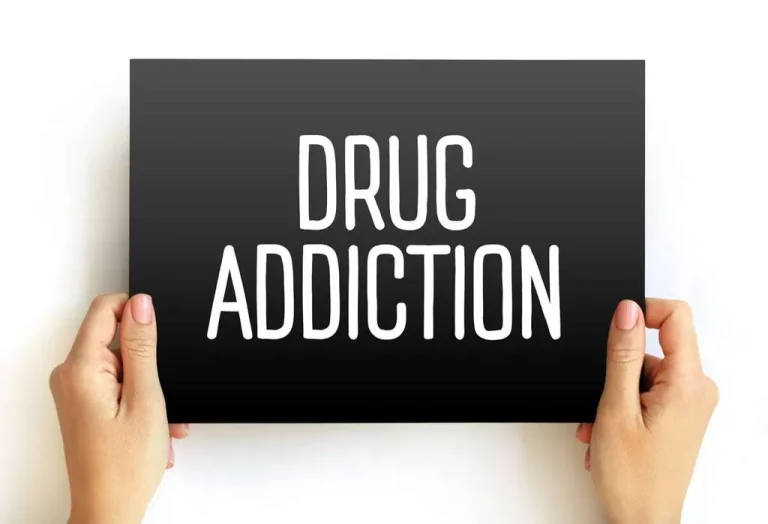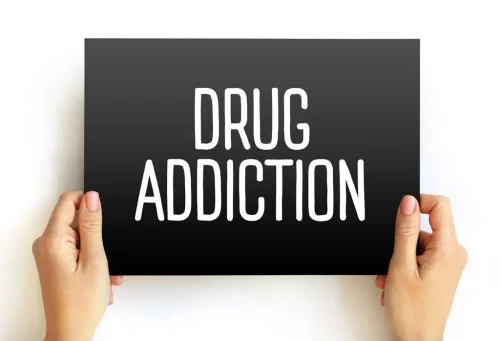
SD assisted with conceptualization of the review, and SD and KW both identified relevant literature for the review and provided critical review, commentary and revision. Check out our blog posts and resource links for the latest information on substance abuse. Set realistic expectations for your recovery journey, understanding that progress may not always be linear. Rather than only focusing on the end goal, celebrate small victories and all positive steps you’ve taken thus far. Learning healthy coping mechanisms can help you manage stress, cravings, and triggers without resorting to substance use.
- This literature – most of which has been conducted in the U.S. – suggests a strong link between abstinence goals and treatment entry.
- It is inevitable that everyone will experience negative emotions at one point or another.
- However, it can sometimes lead to the thought that you have earned a drink or a night of using drugs.
- SD assisted with conceptualization of the review, and SD and KW both identified relevant literature for the review and provided critical review, commentary and revision.
- These individuals also experience negative emotions similar to those experienced by the abstinence violators and may also drink more to cope with these negative emotions.
- However, this approach is consistent with the goal of increasing treatment utilization by reaching those who may not otherwise present to treatment.
Learn From Relapse
Drawing from Intrinsic Motivation Theory (Deci, 1975) and the controlled drinking literature, Miller (1985) argued that clients benefit most when offered choices, both for drinking goals and intervention approaches. A key point in Miller’s theory is that motivation for change is “action-specific”; he argues that no one is “unmotivated,” but that people are motivated to specific actions or goals (Miller, 2006). For example, in AUD treatment, individuals with both goal choices demonstrate significant improvements in drinking-related outcomes (e.g., lower percent drinking days, fewer heavy drinking days), alcohol-related problems, and psychosocial functioning (Dunn & Strain, 2013).
- Relapse prevention includes understanding what triggers substance abuse, which varies from person to person.
- For example, at a large outpatient SUD treatment center in Amsterdam, goal-aligned treatment for drug and alcohol use involves a version of harm reduction psychotherapy that integrates MI and CBT approaches, and focuses on motivational enhancement, self-control training, and relapse prevention (Schippers & Nelissen, 2006).
Is a Relapse Dangerous?
The abstinence violation effect (AVE) describes the tendency of people recovering from addiction to spiral out of control when they experience even a minor relapse. Instead of continuing with recovery, AVE refers to relapsing heavily after a single violation. Ivori Zvorsky is an undergraduate student obtaining her major in psychology at the University of Richmond, USA. Working with Dr Lindgren, she has investigated implicit alcohol cognitions, along with the impact of the environment on self-reported measures of alcohol consumption.
Get connected! Receive support, news, and the latest in cutting-edge addiction treatment right in your inbox.

Despite significant empirical support for nonabstinence alcohol interventions, there is a clear gap in research examining nonabstinence psychosocial treatment for drug use disorders. Future research must test the effectiveness of nonabstinence treatments for drug use and address barriers to implementation. Unfortunately, there has been little empirical research evaluating this approach among individuals with DUD; evidence of effectiveness comes primarily from observational research. For example, at a large outpatient SUD treatment center in Amsterdam, goal-aligned treatment for drug and alcohol use involves a version of harm reduction psychotherapy that integrates MI and CBT approaches, and focuses on motivational enhancement, self-control training, and relapse prevention (Schippers & Nelissen, 2006). Participants with controlled use goals in this center are typically able to achieve https://ecosoberhouse.com/article/whats-the-difference-between-sober-house-and-rehab/ less problematic (38%) or non-problematic (32%) use, while a minority achieve abstinence with (8%) or without (6%) incidental relapse (outcomes were not separately assessed for those with AUD vs. DUD; Schippers & Nelissen, 2006). The current review highlights a notable gap in research empirically evaluating the effectiveness of nonabstinence approaches for DUD treatment.
Related terms:

A recent qualitative study found that concern about missing substances was significantly correlated with not abstinence violation effect completing treatment (Zemore, Ware, Gilbert, & Pinedo, 2021). Unfortunately, few quantitative, survey-based studies have included substance use during treatment as a potential reason for treatment noncompletion, representing a significant gap in this body of literature (for a review, see Brorson, Ajo Arnevik, Rand-Hendriksen, & Duckert, 2013). Additionally, no studies identified in this review compared reasons for not completing treatment between abstinence-focused and nonabstinence treatment. Harm reduction may also be well-suited for people with high-risk drug use and severe, treatment-resistant SUDs (Finney & Moos, 2006; Ivsins, Pauly, Brown, & Evans, 2019). These individuals are considered good candidates for harm reduction interventions because of the severity of substance-related negative consequences, and thus the urgency of reducing these harms. Indeed, this argument has been central to advocacy around harm reduction interventions for people who inject drugs, such as SSPs and safe injection facilities (Barry et al., 2019; Kulikowski & Linder, 2018).

Understand The Relapse Process

Two publications, Cognitive Behavioral Coping Skills Training for Alcohol Dependence (Kadden et al., 1994; Monti, Kadden, Rohsenow, Cooney, & Abrams, 2002) and Cognitive Behavioral Therapy for Cocaine Addiction (Carroll, 1998), are based on the RP model and techniques. Although specific CBT interventions may focus more or less on particular techniques or skills, the primary goal of CBT for addictions is to assist clients in mastering skills that will allow them to become and remain abstinent from alcohol and/or drugs (Kadden et al., 1994). CBT treatments are usually guided by a manual, are relatively short term (12 to 16 weeks) in duration, and focus on the present and future. Clients are expected to monitor substance use (see Table 8.1) and complete homework exercises between sessions.
- This could include further evaluating established intervention models (e.g., MI and RP) among individuals with DUD who have nonabstinence goals, adapting existing abstinence-focused treatments (e.g., Contingency Management) to nonabstinence applications, and testing the efficacy of newer models (e.g., harm reduction psychotherapy).
- It’s important to challenge negative beliefs and cognitive distortions that may arise following a relapse.
- He has received continuous funding for his research from a variety of agencies including the National Institute on Alcohol Abuse and Alcoholism, the National Institute on Drug Abuse, the Alcoholic Beverage Medical Research Foundation, and the Robert Wood Johnson Foundation.
- Here we provide a brief review of existing models of nonabstinence psychosocial treatment, with the goal of summarizing the state of the literature and identifying notable gaps and directions for future research.
- In the multifaceted journey of overcoming addiction and living a healthier life, individuals often encounter a psychological phenomenon known as the abstinence violation effect (AVE).
- Publications about harm reduction psychotherapy have included numerous case studies and client examples that highlight the utility of the approach for helping clients achieve reductions in drug and alcohol use and related problems, moderate/controlled use, and abstinence (Rothschild, 2015b; Tatarsky, 2002; Tatarsky & Kellogg, 2010).
- There is also a need for updated research examining standards of practice in community SUD treatment, including acceptance of non-abstinence goals and facility policies such as administrative discharge.
Fortunately, professional treatment for addiction can improve outcomes for people experiencing the Abstinence Violation Effect. Twelve-month relapse rates following alcohol or drug cessation attempts can range from 60 to 90 percent, and the AVE can contribute to extended relapses. Some examples of proven coping skills include practicing mindfulness, engaging in exercise, or pursuing activities that bring you fulfillment. It’s important to challenge negative beliefs and cognitive distortions that may arise following a relapse. Counteracting the effects of the AVE is necessary to support long-term recovery from addiction. This can create a cycle of self-recrimination and further substance use, making it challenging to maintain long-term abstinence.


